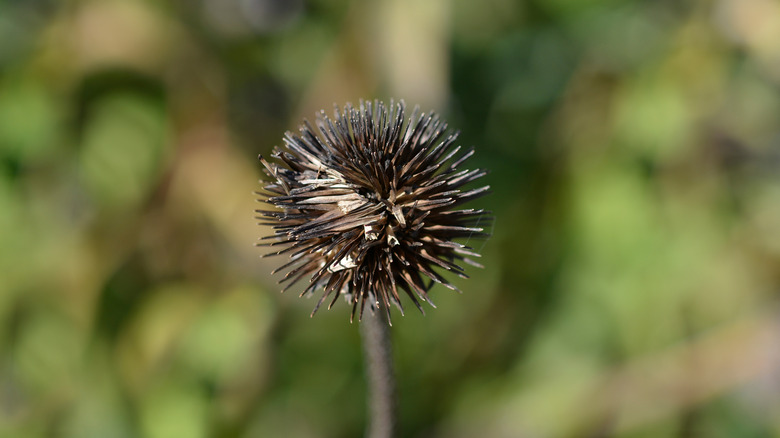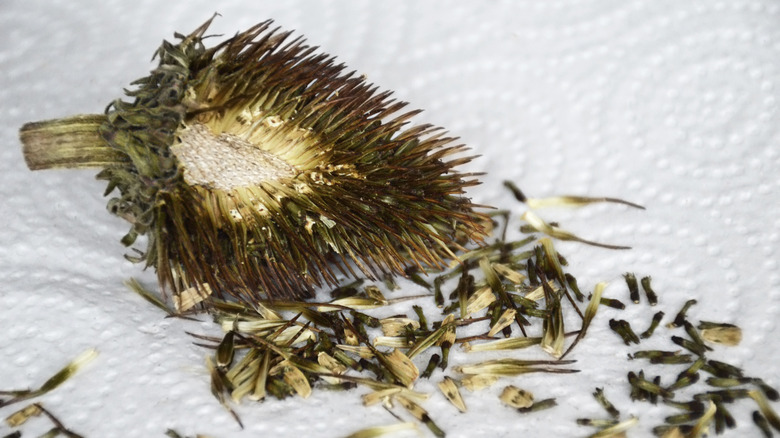The Budget-Friendly Trick To Grow More Coneflowers Every Year
Want more coneflowers in your yard? Don't waste money by buying seeds – the coneflowers you already have produce plenty, and harvesting seeds from your garden is as easy as cutting off the dried seedheads. Then you can preserve them for later or sow them right into the ground for new plants next spring.
Coneflower is the common name for the Echinacea genus, which consists of eight to nine perennial flower species. Suitable for USDA hardiness zones 3 to 9, they are native to the eastern and central United States and feature all the signature benefits of native wildflowers, such as being easy to grow and supporting biodiversity. With their deep roots, they can easily tolerate heat and drought and don't require much fertilizing. Their nectar attracts butterflies, while birds such as goldfinches love eating the seeds.
Coneflowers are not generally considered weedy, but they do often self-seed. By harvesting the seeds yourself, you can not only get more plants for free, but also have the ability to control exactly where future coneflowers grow. The only varieties of coneflower that aren't good candidates for this method are hybrids, which may be sterile.
Harvesting and planting coneflower seeds
Coneflowers naturally have a long blooming season, and deadheading can help extend it even longer — but you'll need to stop in the early fall if you want the plants to produce seeds. You'll know the seedhead is ready to harvest when it's brown and looks dead, roughly a week after the petals fall off. Cut off the seedheads with some of the stem attached. (If you want to provide some winter food for birds, leave some intact.) Then, put the seedheads upside down in a paper bag and hang them in a dark, dry place.
After a week, you can separate the seeds from the seedhead. An easy technique is to place them into a jar or old coffee can and shake it until the seeds are released. Then pour through a strainer to separate the seeds from the chaff. If you're not ready to plant the seeds right away, store them in an airtight container and add a desiccant, such as the little desiccant bags that come in new clothes or electronics, or a layer of cornmeal. The germination rate will decrease over time, but they should remain viable for several years when stored in a cool, dark place.
How to sow coneflower seeds
Coneflower seeds are a good choice for beginner gardeners because they're easy to sow. To sow them outdoors, plant in the fall and cover with a light layer of soil; you should see seedlings in the spring. Keep in mind that coneflowers can thrive in both full sun and partial shade.
You can also start the seeds indoors. Again, cover with a thin layer of potting soil so light can still reach them, and moisten the soil. It's ideal to put them in the fridge for two months before taking them out and letting them warm back up. They should germinate in 10 to 14 days. You can transplant them outdoors up to two months before the last frost. If that's still too far away, you can transplant them into small pots for a few weeks before planting them outdoors. Coneflowers can take more than two years to grow into a full-size plant from seed.


